- Established 1982 -HOME: www.hiltonpond.org
THIS WEEK at HILTON POND Subscribe for free to our award-winning nature newsletter (Back to Preceding Week; on to Next Week) |
A SUMMER BUTTERFLY, Except for noticeable increase in Ruby-throated Hummingbirds as their newest chicks take flight, by mid-July things start to slow down at Hilton Pond Center after a busy spring season. The vernal wildflower bloom is long since over and initial tree leaves are completely unfurled, casting welcome shade on hot mid-summer days that seem even hotter than usual--and apparently are. Courtship and nesting are already done for many songbirds, although some avian species like Northern Cardinals and Eastern Bluebirds may be working on a second or even third set of eggs. When dusk falls and temperatures cool a little, activity increases for some organisms--evidenced by a loud mixed nocturnal chorus of Bush Katydids, Field Crickets, and ever-boisterous Green Tree Frogs. (Lightning Bugs also put on a show, but their blinking doesn't make much noise.)
All text, maps, charts & photos © Hilton Pond Center Despite sweltering July heat, some critters do remain active by day--including a few spring/summer butterflies. Perhaps most obvious this week at the Center were several large black and white lepidopterans with long appendages on their hindwings. Among the most easily identified butterflies, these were Zebra Swallowtails, aptly named and not to be confused with Tiger Swallowtails that are yellow and black. Note also those red antennae.
All text, maps, charts & photos © Hilton Pond Center Zebra Swallowtails, Eurytides marcellus, are native to the eastern U.S. and southern Canada and are Tennessee's state butterfly. The species' yellow-banded caterpillars (above) are highly selective, munching exclusively on foliage of Pawpaws, Asimina triloba. It's not coincidental we've seen an increase in Zebra Swallowtails through the years at the Center, what with the appearance of many Pawpaw sprouts planted--we suppose--in the droppings of fruit-loving Raccoons and Virginia Opossums that ate the tasty ripened fruit. Zebra Swallowtail adults are long-lived and survive in large part because those Pawpaw leaves their larvae eat contain annonaceous acetogenins that are highly distasteful to birds and other potential predators. These compounds are sequestered by the caterpillars and carry over in metamorphosis to adult butterflies. The latter don't eat Pawpaws but take nectar from Eastern Redbuds, Viper's-bugloss, and various blackberries--all of which are common at Hilton Pond Center. All text, maps, charts & photos © Hilton Pond Center FLEDGLING BIRDS The latest bird fledglings were indeed out and about this week at Hilton Pond Center, mostly on their own by now but a few still begging for one last handout from exhausted parents. In some cases the father was tending to his offspring while mom was back at a nest brooding another batch of siblings.
All text, maps, charts & photos © Hilton Pond Center We captured a trio of Northern Cardinals in early July, distinguishable as immature by their drab plumage and brownish black mandibles that will turn orange as they age. One (above)--judged to be a male because he already had bright red feathers coming in on his wings and back--seemed a little extravagant with his headgear. Those towering crest feathers in our photo will be lost sometime soon, replaced by deep red feathers in the somewhat more refined cone shape of an adult male.
All text, maps, charts & photos © Hilton Pond Center A Tufted Titmouse snared in one of our nets reveal its juvenility because of a soft pinkish-yellow gape that served as a target area when it was in the nest. It's easier for food-bearing parents to find the chicks' gaping maws when they're brightly colored. Like the cardinal just mentioned, this little titmouse had a poorly formed crest that will be more tightly tufted in adult plumage, and the fledgling will lose that fluffy patch of neck feathers that are found in baby birds of many species. All text, maps, charts & photos © Hilton Pond Center DISEASE PROBLEMS AT FEEDERS And speaking of fledgling birds, during the past few weeks at Hilton Pond Center we have captured for banding several immature House Finches with mild signs of mycoplasmal conjunctivitis, Obviously, conjunctivitis is NOT just a winter ailment and can occur year-round. Our research indicates young House Finches can acquire the disease even while still in the nest, likely from carrier parents that had conjunctivitis but survived. Watery, swollen eyes (see photo below) are just a symptom; the bacteria also invade lungs and in worst cases kill the bird.
All text, maps, charts & photos © Hilton Pond Center We encourage you to watch your feeders carefully for any signs of conjunctivitis, remembering that House Finches are not the only carriers or victims. If you see ailing birds, stop feeding for at least a week and sterilize ALL your feeders with a mild 10% water-bleach solution. Although tube feeders are prime suspects, any type of feeder might facilitate disease spread--including platform feeders at which birds pick through seeds (and their own contaminated droppings). Thus, if disease is detected you might also spray the bleach solution on soil and seed shells under your feeders; bird baths should likewise be decontaminated.
All text, maps, charts & photos © Hilton Pond Center NOTE 1: Mycoplasmal conjunctivitis is not the only visible disease to infect wild birds. Young House Finches, in particular, seem especially susceptible to various strains of avipoxviruses that give rise to a condition known as "avian pox." The dry (cutaneous) form of this disease is marked by wart-like growths on featherless areas such as toes, legs, and base of the bill, and sometimes around the eyes. This week at the Center we caught a young HOFI (above) with a more typical wart on its upper mandible. Although these lesions usually subside on their own, they sometimes leave body parts disfigured. Avian pox sometimes can be spread via contaminated feeders, female mosquitoes are the true villains as vectors that feed on an infected host bird and transmit the virus while biting a new one. Mosquitoes thrive in standing water, so one way to help control avian pox is by frequent cleaning of bird baths.
All text, maps, charts & photos © Hilton Pond Center NOTE 2: It's worth mentioning House Finches (and many other species) do visit hummingbird feeders (above). While there's some evidence hummingbirds can become infected with mycoplasmal bacteria in laboratory situations, controlled studies in natural settings would be needed to conclusively demonstrate hummers can acquire the disease from finches at feeders or transmit it directly to other hummingbirds. Of course, if you happen to see an infected House Finch stealing sugar water, it would be prudent to wash and sterilize that feeder--and to keep it down for several days. In any case, frequent cleaning of hummingbird feeders eliminates mold growth and assures your tiny guests of fresh food. In the heat of summer here at Hilton Pond Center we never put out more 4:1 sugar water than our ruby-throats can consume in three days max. All text, maps, charts & photos © Hilton Pond Center HILTON POND SUNSETS (AND SUNRISES) "Never trust a person too lazy to get up for sunrise
Sunrise over Hilton Pond, 12 July 2023 A little ground fog gilded the view from the pond at dawn.
Sunset over Hilton Pond, 14 July 2023 Rained .hard a mile from here today--for a minute or two--but All text, maps, charts & photos © Hilton Pond Center Don't forget to scroll down for lists of Hilton Pond supporters and of all birds banded and recaptured during the period. Photoshop image post-processing for this page employs |
|---|
|
"This Week at Hilton Pond" is written and photographed by Dr. Bill Hilton Jr., executive director of Hilton Pond Center for Piedmont Natural History
|
|
|
Please refer "This Week at Hilton Pond" to others by clicking on this button: |
|

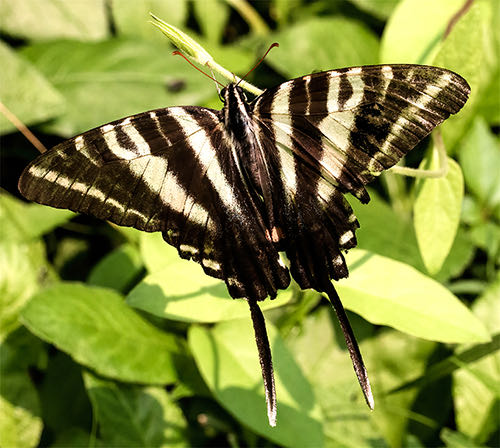
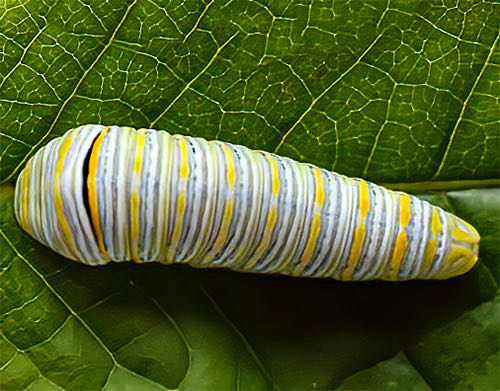
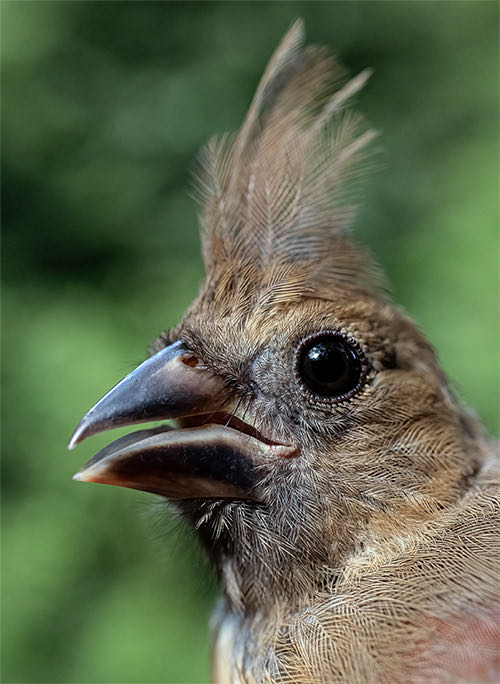
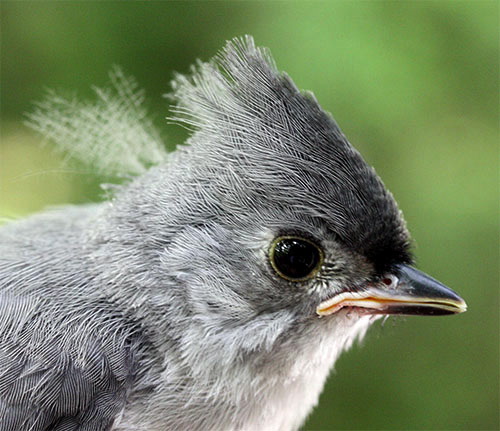
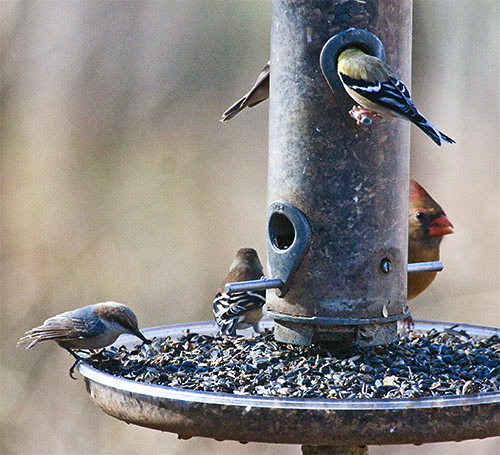 also known as "Winter Finch Eye Disease." To avoid further spread of this highly contagious and possibly fatal ailment, we immediately ceased offering sunflower seeds in tube-style feeders like the one at right. When finches stick their heads through those round feeding ports they may rub against them and release mucus from their eyes--thus transmitting
also known as "Winter Finch Eye Disease." To avoid further spread of this highly contagious and possibly fatal ailment, we immediately ceased offering sunflower seeds in tube-style feeders like the one at right. When finches stick their heads through those round feeding ports they may rub against them and release mucus from their eyes--thus transmitting 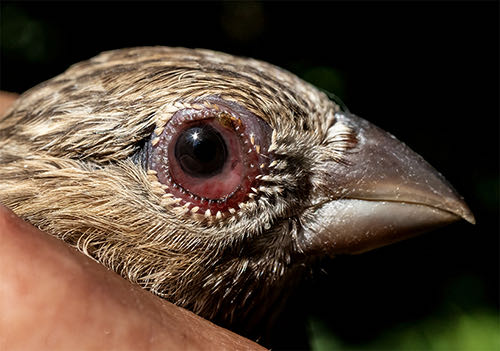
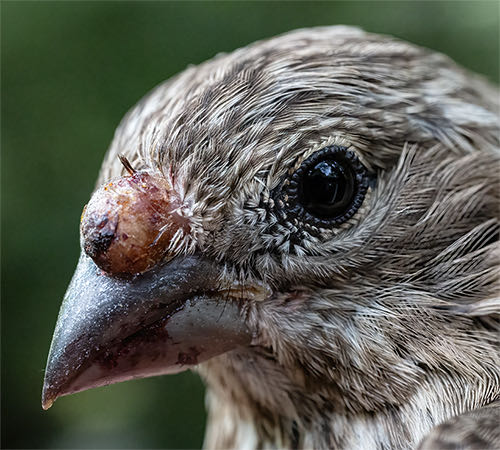
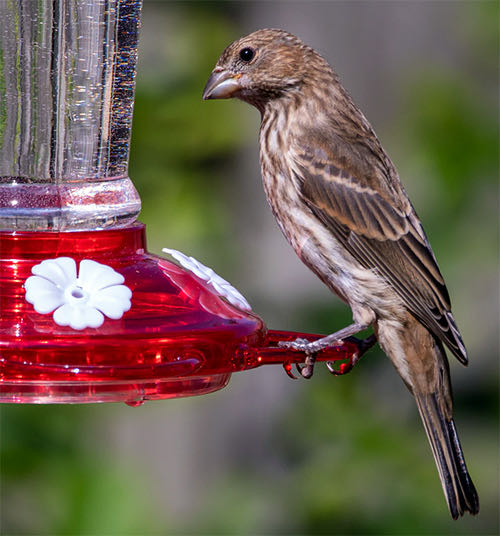
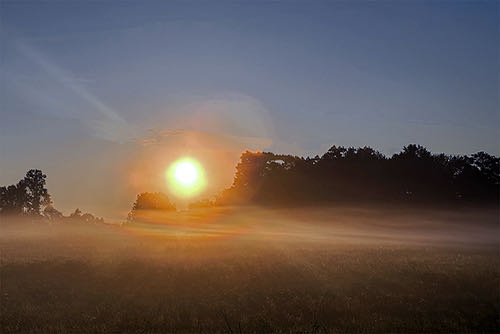
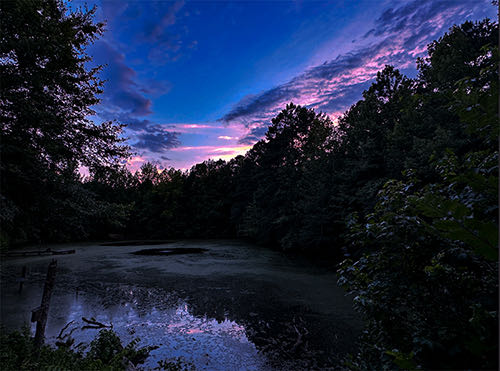









 Please report your spring, summer &
Please report your spring, summer &